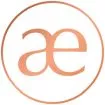In the recent EU case C-783/19, a Spanish tapas bar chain had used CHAMPANILLO in its name, why Champagne producers had brought action. The EU Court clarified the scope of protection and found that there was significant similarity between the name CHAMPANILLO and the world-famous Champagne protected by EU law due to its origin. New and interestingly, a service provider's use of a name similar to names protected due to their special origin was deemed an infringement.
Background
EU law protects certain names for food and beverages with a specific designation of origin, such as Parmegiano Reggiano, Feta and Champagne. Other producers' uses of such names may breach EU law. In 2017 for instance, the EU Court ruled that the supermarket chain Aldi's Christmas special CHAMPAGNER SORBET in Germany had gone too far. Currently there is a legal battle in the EU concerning whether PROSEK for the Czech sweet wine should be allowed to be registered in the EU, Italy claiming it would do damage to the protected name for the famous Italian sparkling wine PROSECCO.
The Facts
In the recent controversial EU trademark case C-783/19, an owner of 5 tapas bars in Spain used the sign CHAMPANILLO (which in Spanish means 'little champagne') to designate and promote his establishments. In his advertising, he used an image of two clinking champagne glasses containing a sparkling beverage as shown below.
An organisation safeguarding interests of champagne producers (The Comite? Inter professionnel du Vin de Champagne or CIVC) brought action before the Spanish courts, seeking to prohibit the use of the term CHAMPANILLO, the ground being that the use of that sign infringed the protected designation of origin, (PDO) Champagne. The organisation also challenged the use of the name CHAMPANILLO on social media and in the domain name champanillo.es.
A Court in Barcelona requested the EU Court of Justice to clarify EU's law scope of protection. Guidance was sought in relation to whether use of the term champanillo designating services (in contrast to products) fell under the scope of protection offered to the protected designation of origin in relation to so-called evocation. Evocation generally means the act of bringing or recalling a feeling, memory, or image to the conscious mind.
The Law
The applicable law in the case was the Regulation establishing a common organisation of the markets in agricultural products (Regulation (EU) No 1308/2013). That regulation is intended to assure consumers that agricultural products bearing a registered geographical indication have certain specific characteristics due to their provenance from a particular geographical area. Accordingly, these products offer a certain guarantee of quality. The first aim of the regulation is to enable agricultural operators to secure higher incomes in return for a genuine effort to improve quality. The second aim is to prevent improper use by third parties who seek to profit from the products' reputation. A wide protection is thereby established. The Court stated that Article 103(2)(b) was to be applied. The Article protects even conduct that merely suggests the protected name in such a way that it causes the consumer to establish a "sufficiently close link with it".
The Judgement
Firstly, the Court found that the regulation protected against not only products, but also services. This because an interpretation that would not grant protection against services would 1) be inconsistent with the broad scope of protection, and 2) prevent the protection aim from being fully attained.
Secondly, the Court noted 1) that the regulation does not indicate that the protection is limited solely to cases where signs are 'comparable' or 'similar' , and 2) that the regulation does not indicate that the protection extends to cases where the sign refers to products or services which are different from each other.
Thirdly, the Court stated that – according to EU case-law – the evocation of a protected name is established in a situation where the consumer is confronted with the name of the geographically protected product in the form of the image triggered in the consumer's mind of the geographically protected product.
Fourthly, evocation can be deemed not only where the protected sign and the disputed sign are similar in appearance, and there is a phonetic and visual relationship between the signs. Evocation may also exist when there is merely a 'conceptual proximity' between the protected name and the disputed sign.
Fifthly, the Court stated that the decisive criterion for evocation is whether the image of the disputed sign directly triggers the name of the protected product in a consumer's mind. The link must be sufficiently clear and direct between the term used to designate the disputed product and the protected product.
Lastly, the Court specified that a link in the minds of consumers in only one Member State is sufficient to establish evocation.
aera's comments
The judgement clarifies that products of a certain origin are also
protected against third parties' signs in relation to services.
Firstly, the concept of 'evocation', within the meaning of
the regulation, does not require that products/services in question
are identical or similar. It may be sufficient that
there is a conceptual proximity. Secondly,
a sufficiently
clear and direct link between the
disputed name and the PDO must be created in the mind of the
relevant European consumer. Further, the decision is important
because it shows that one does not need to prove a likelihood of
confusion, nor the existence of wilful misconduct or negligence,
nor a competitive relationship between the products. Lastly, there
is no need to conduct an assessment of an attempt at unfair
competition.
Further readings:
- C-783/19 Judgment of the Court (Fifth Chamber) of 9 September 2021 Comité Interprofessionnel du Vin de Champagne v GB
- Regulation (EU) No 1308/2013
The content of this article is intended to provide a general guide to the subject matter. Specialist advice should be sought about your specific circumstances.


